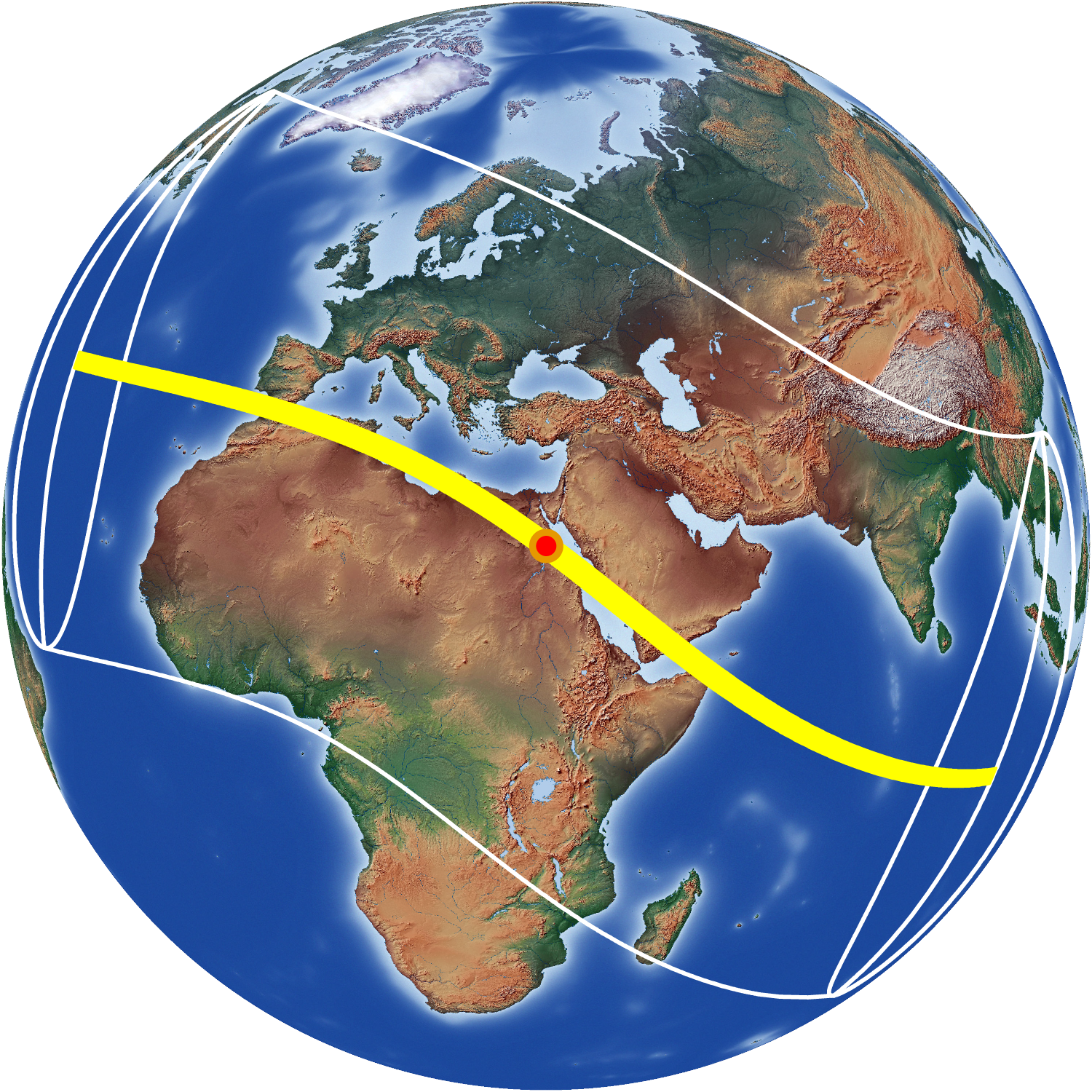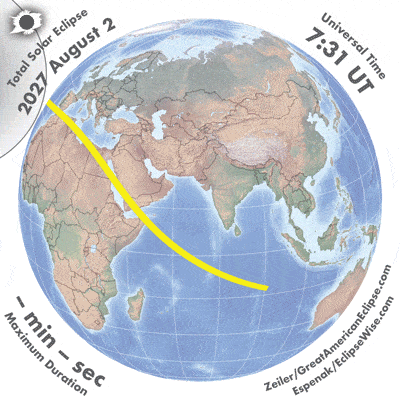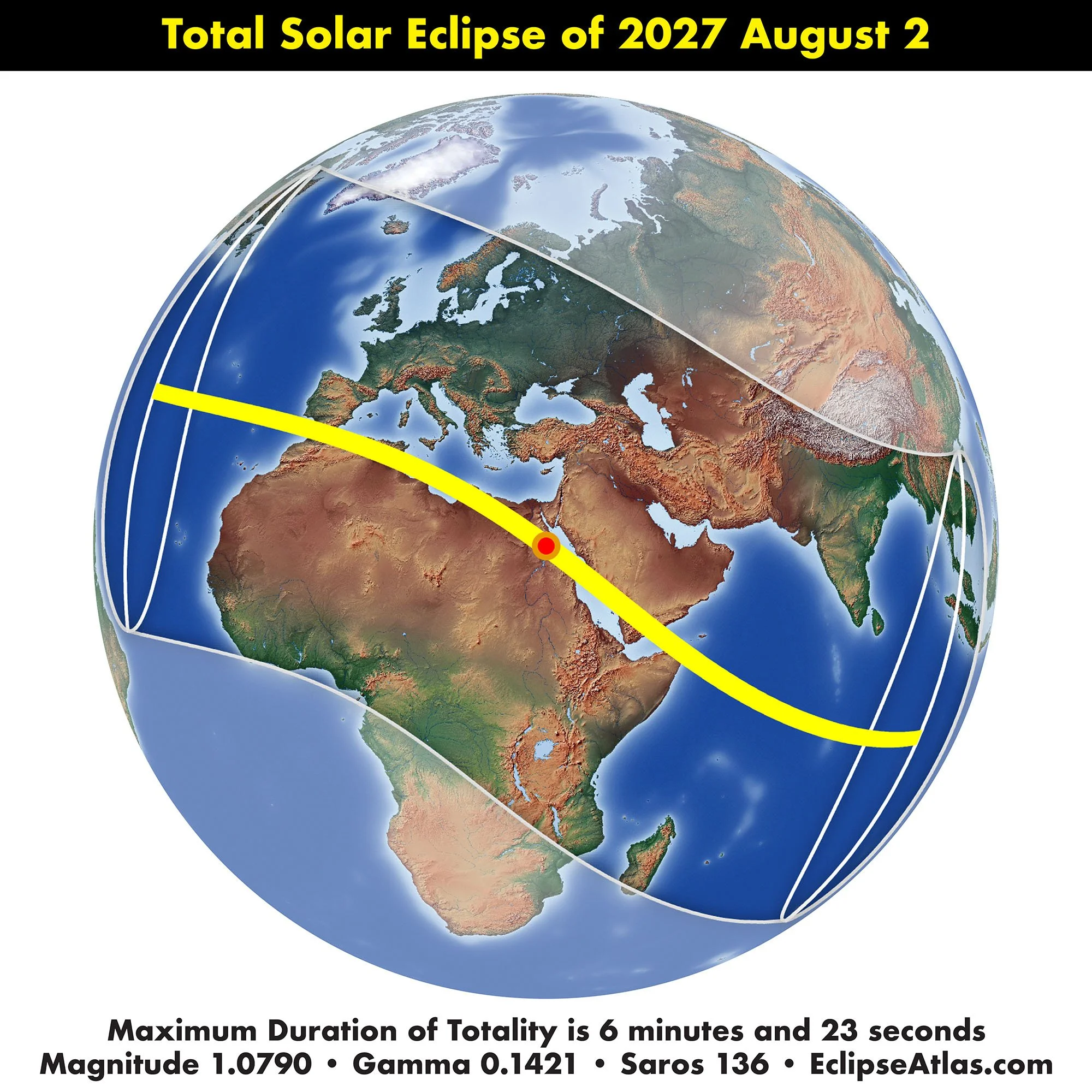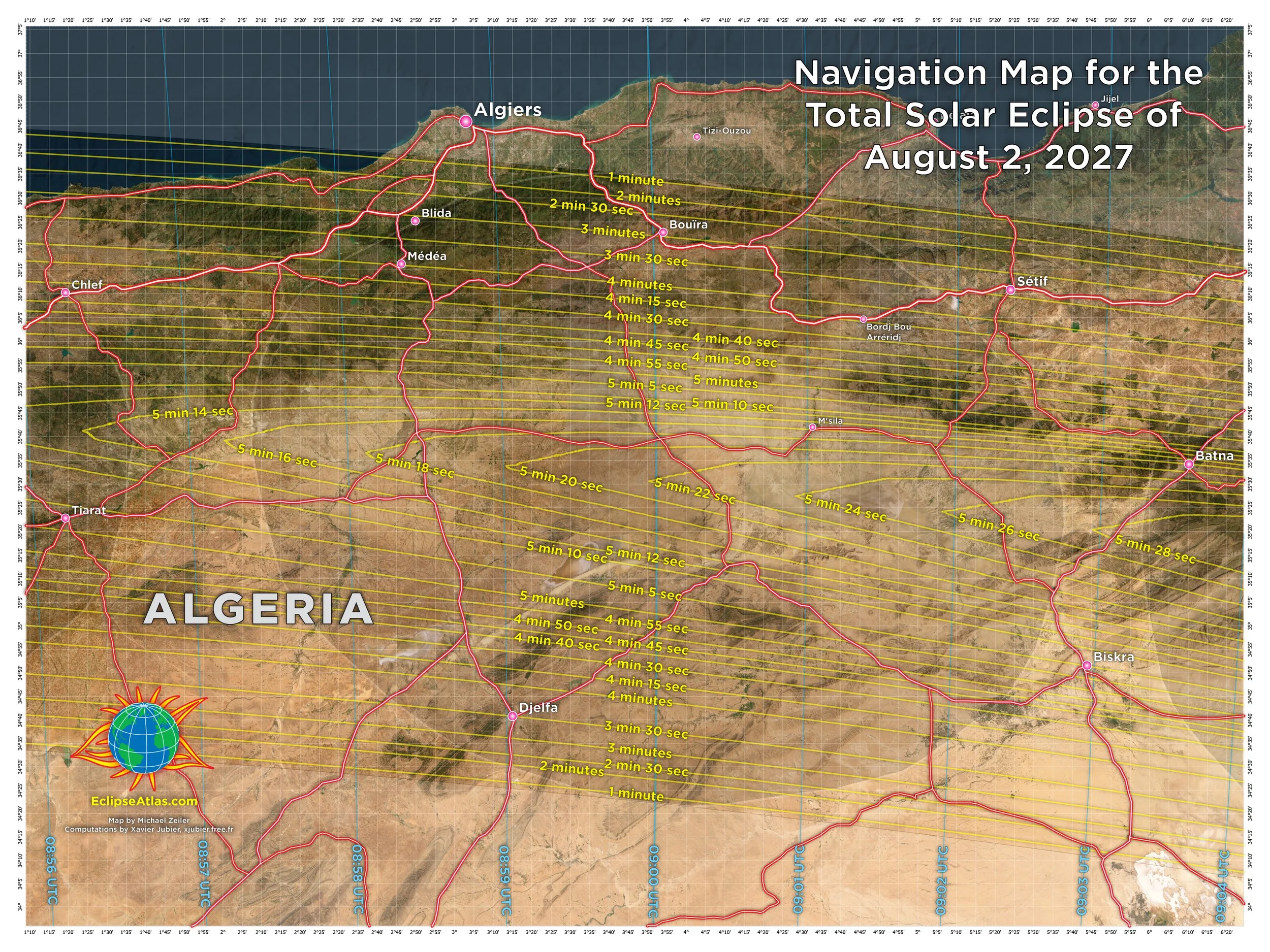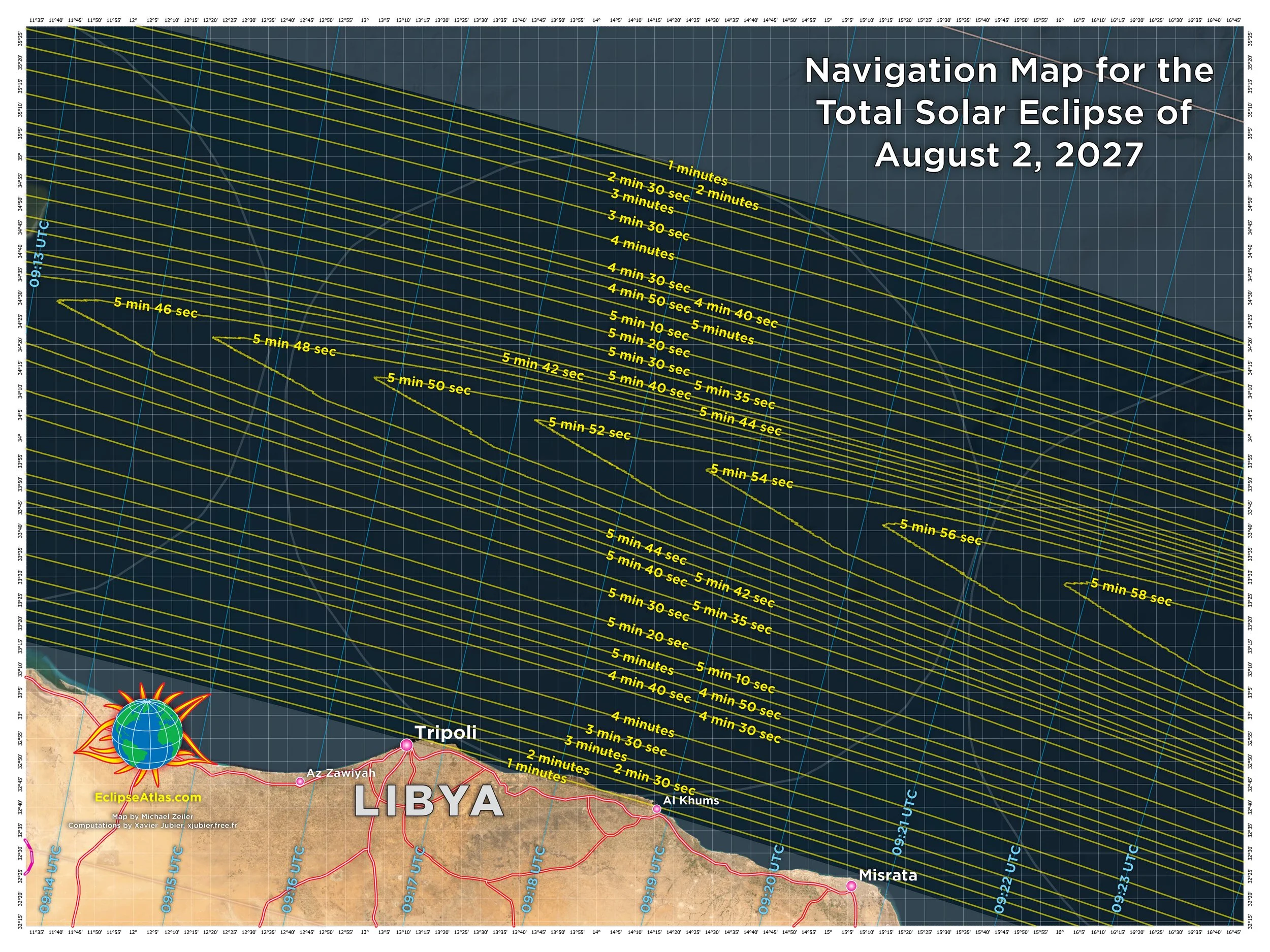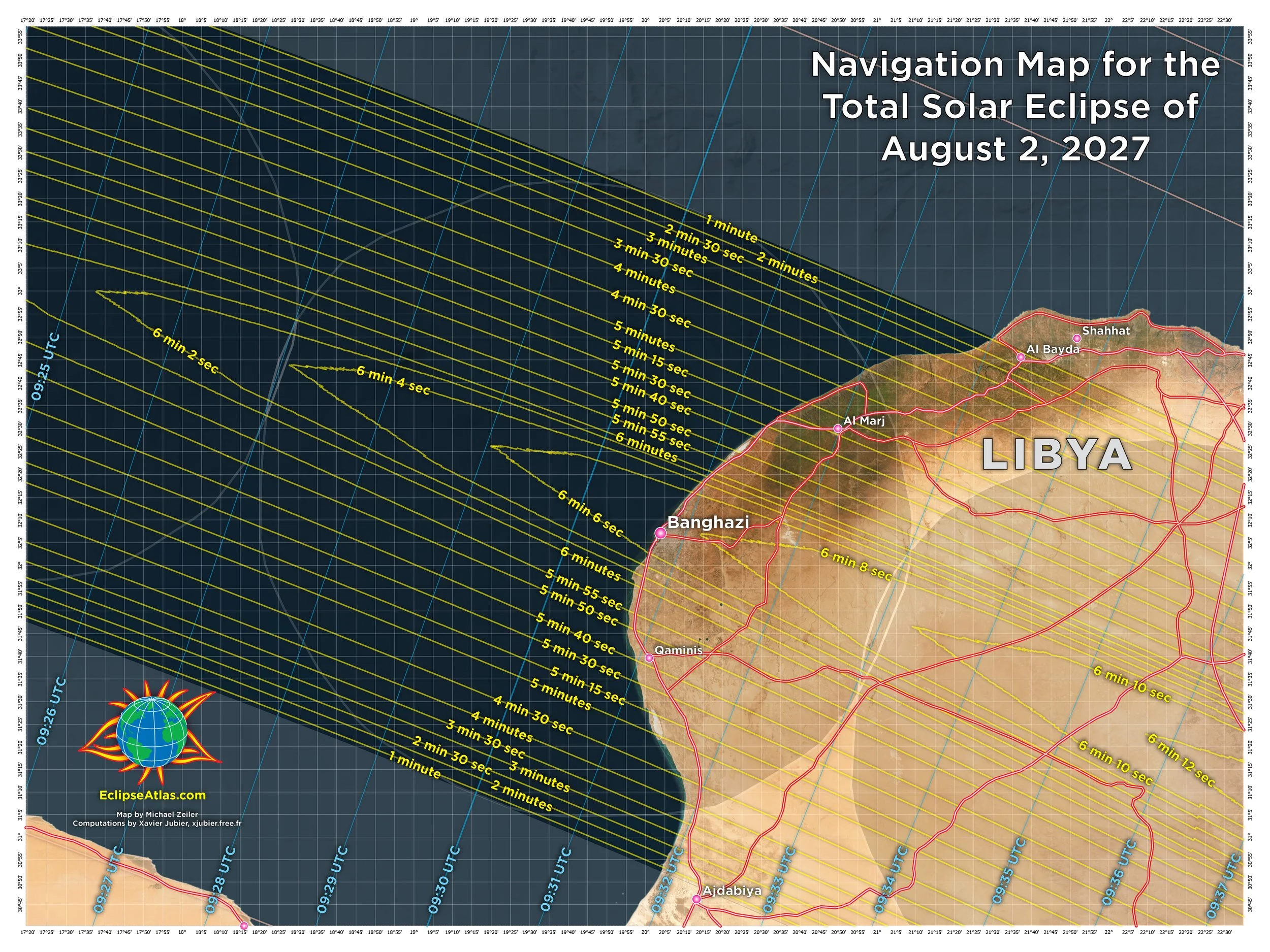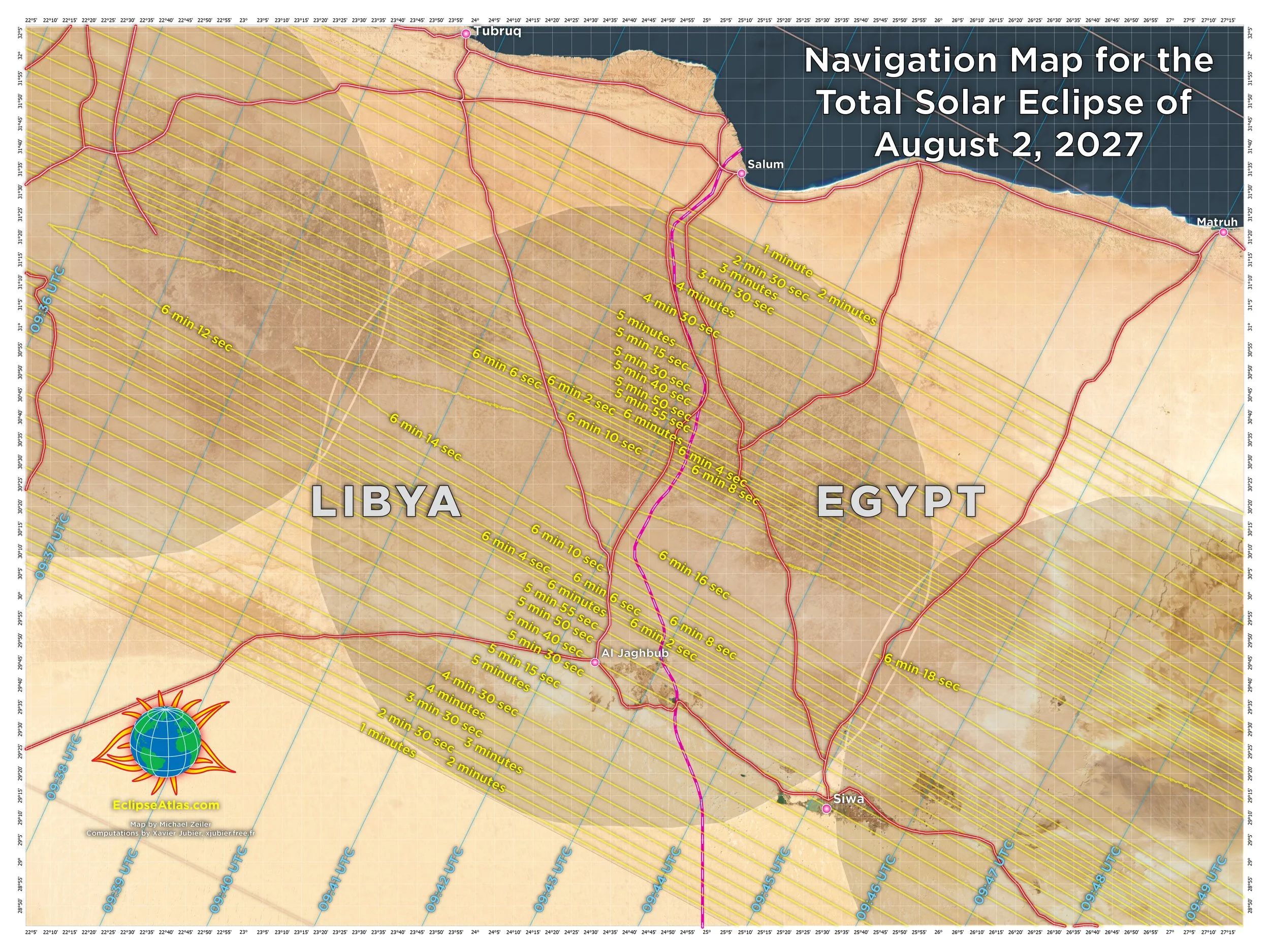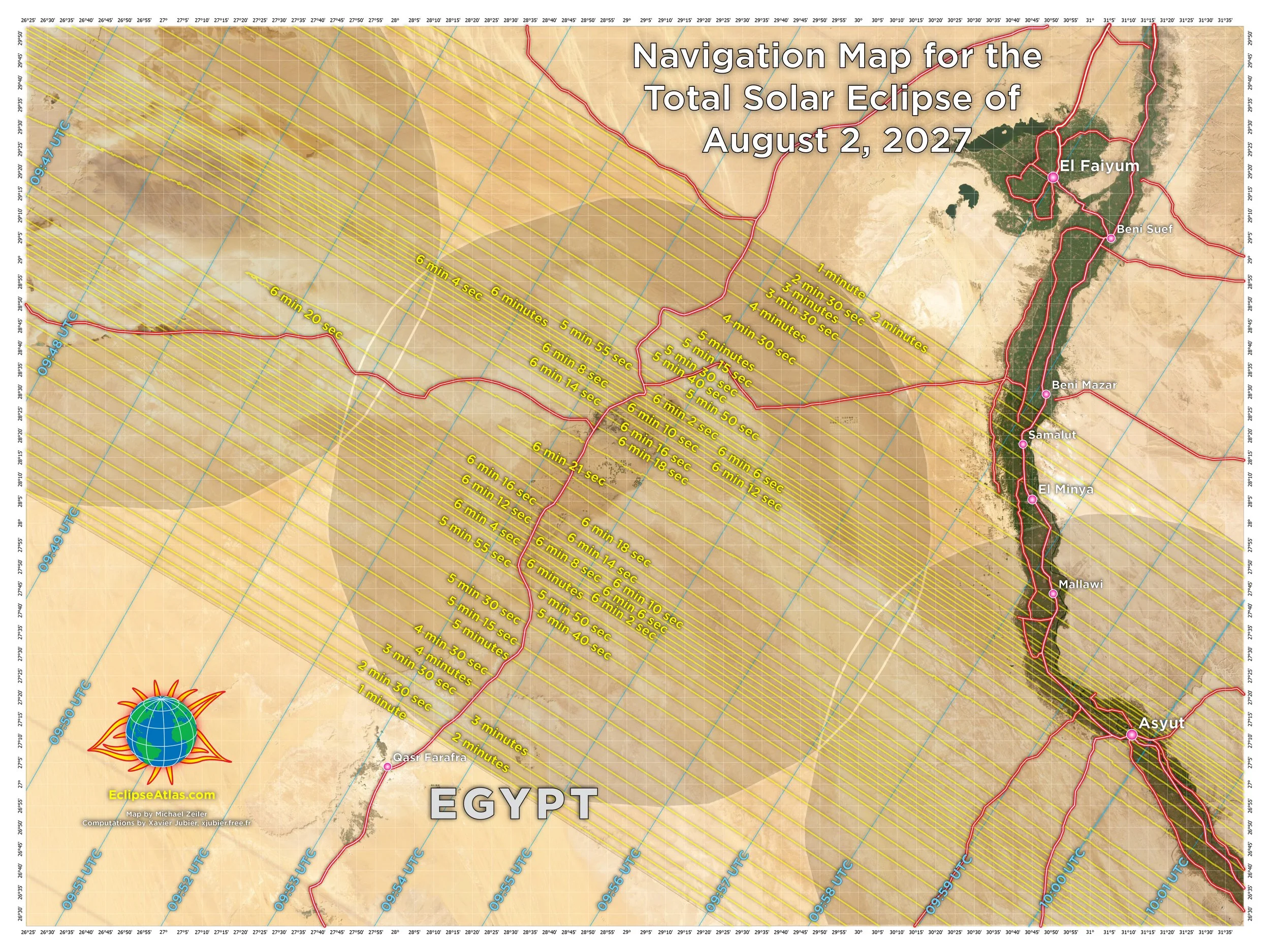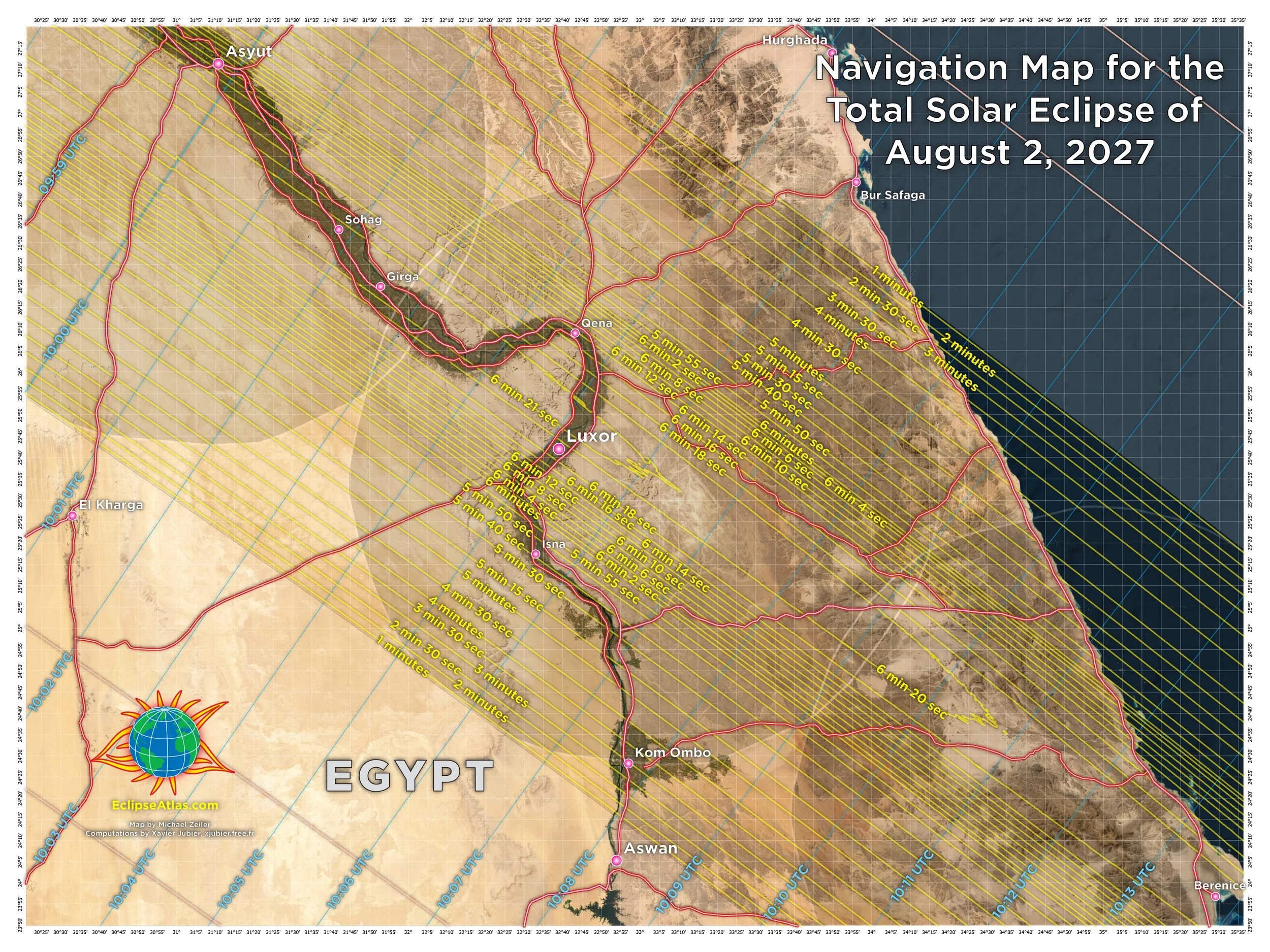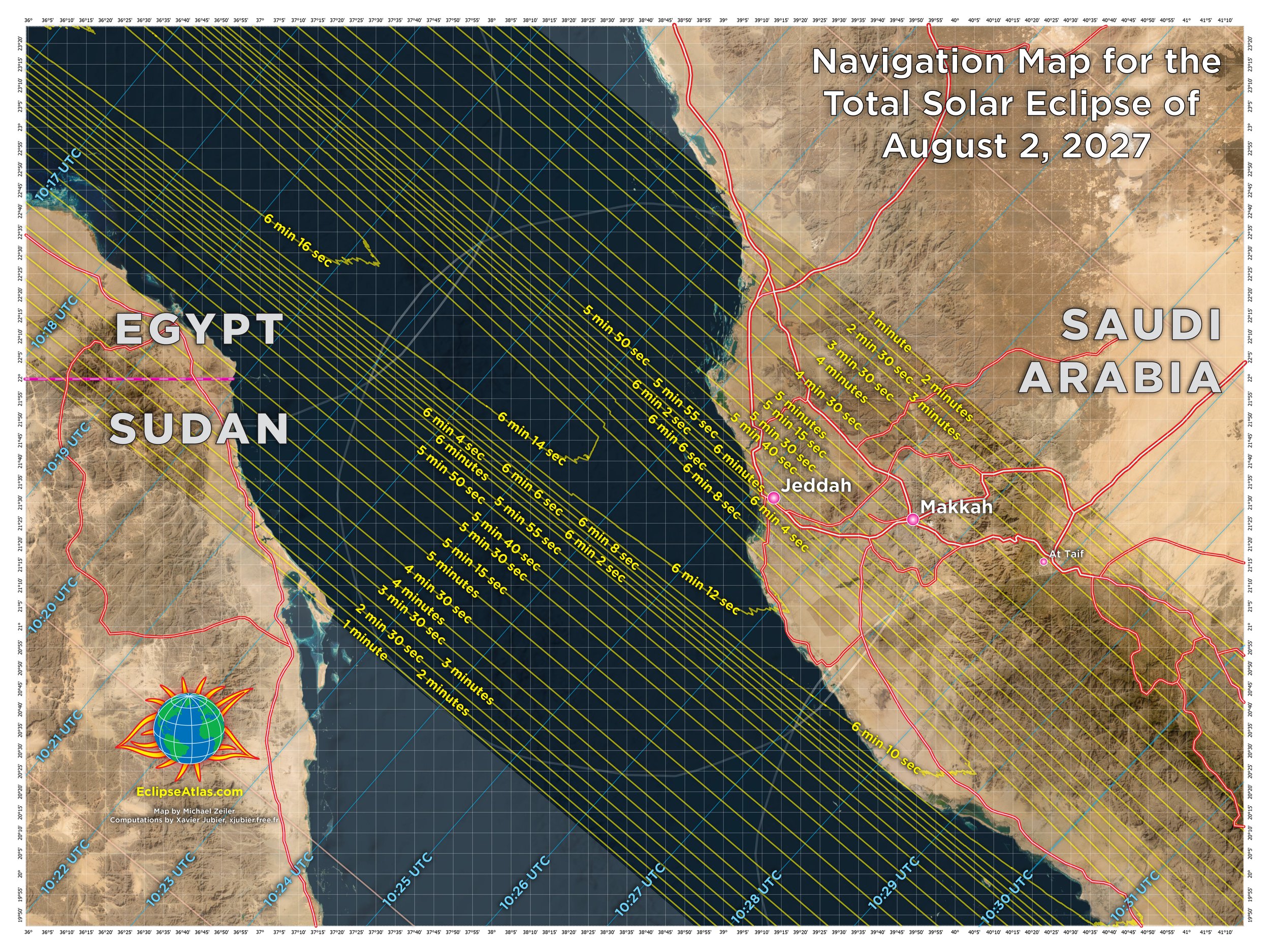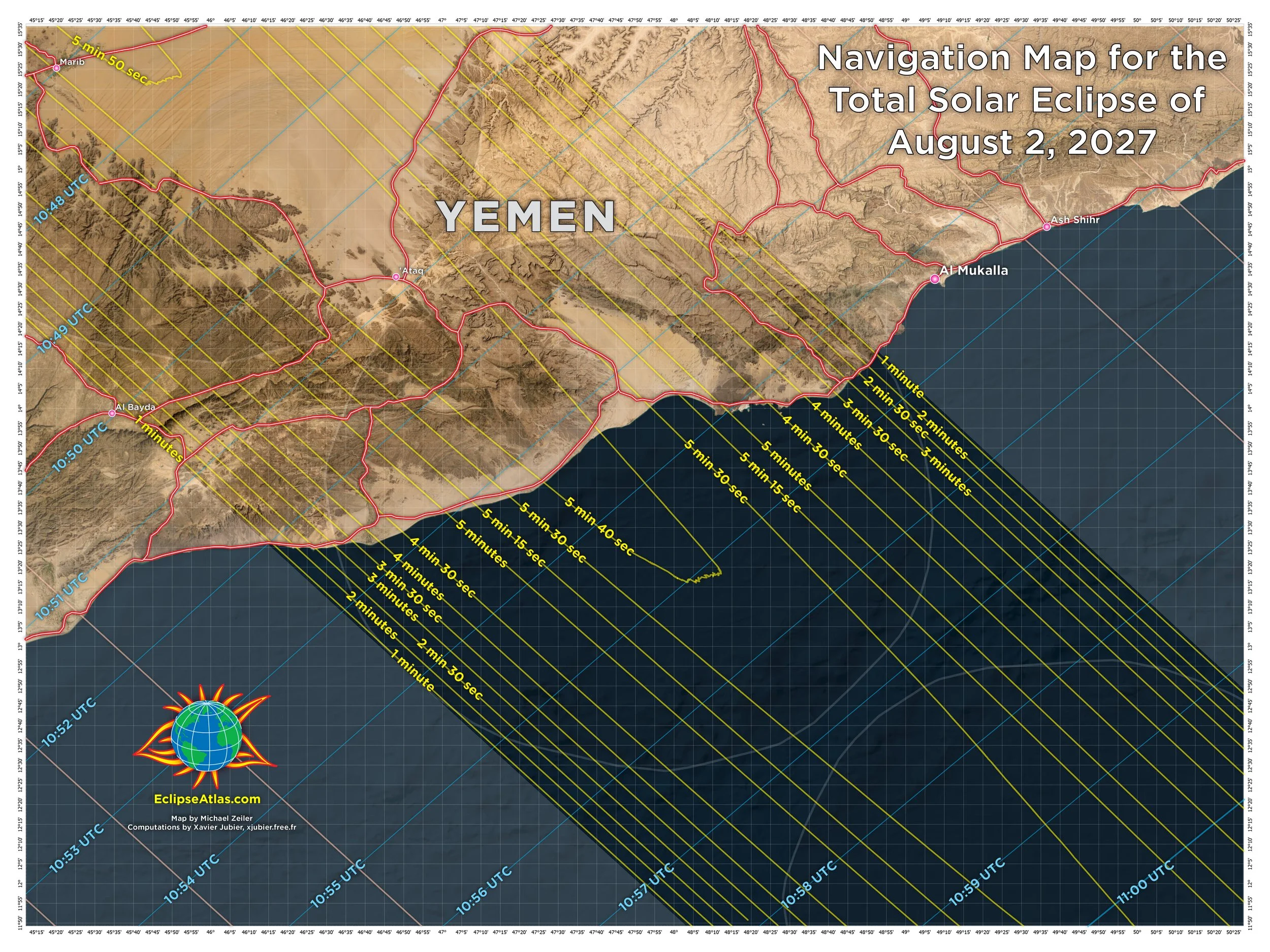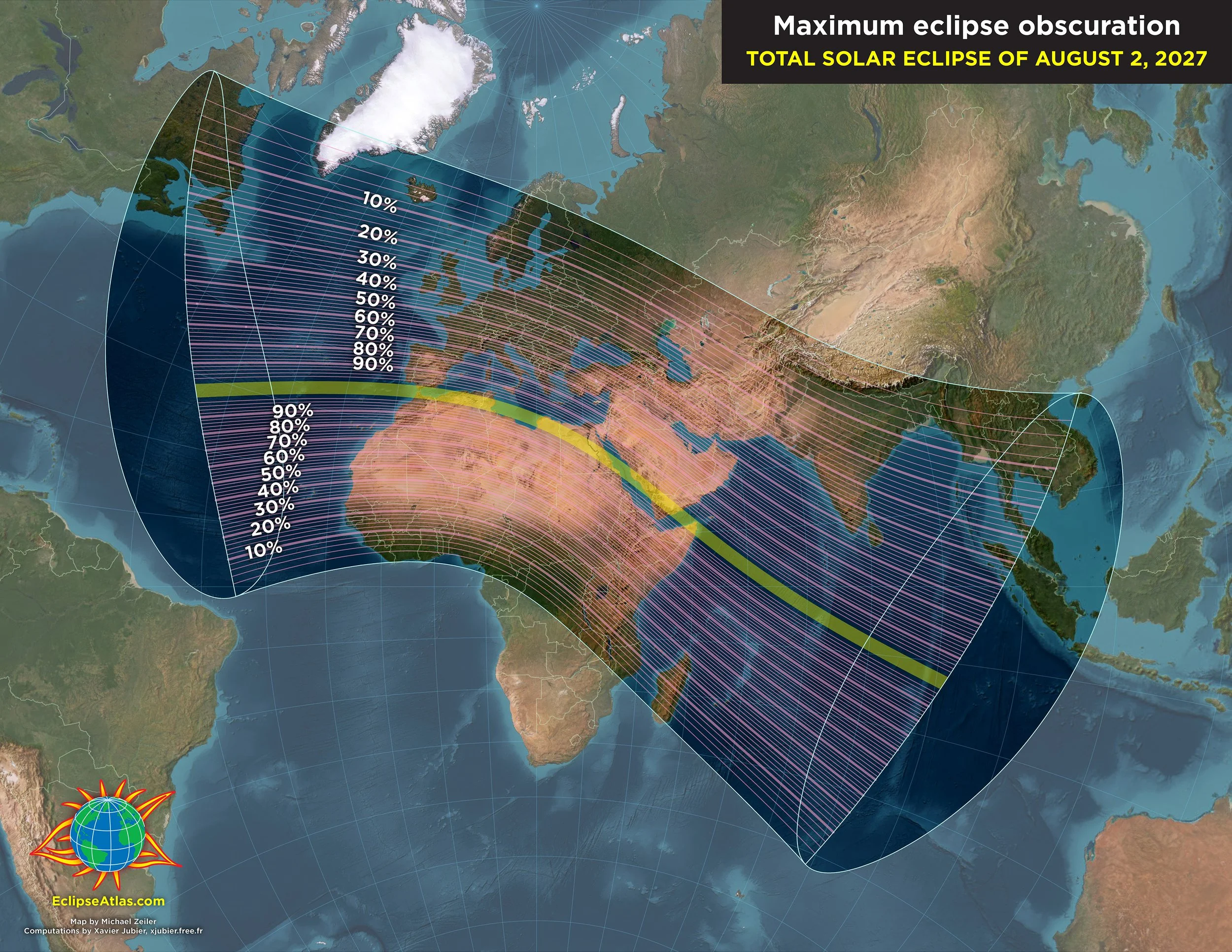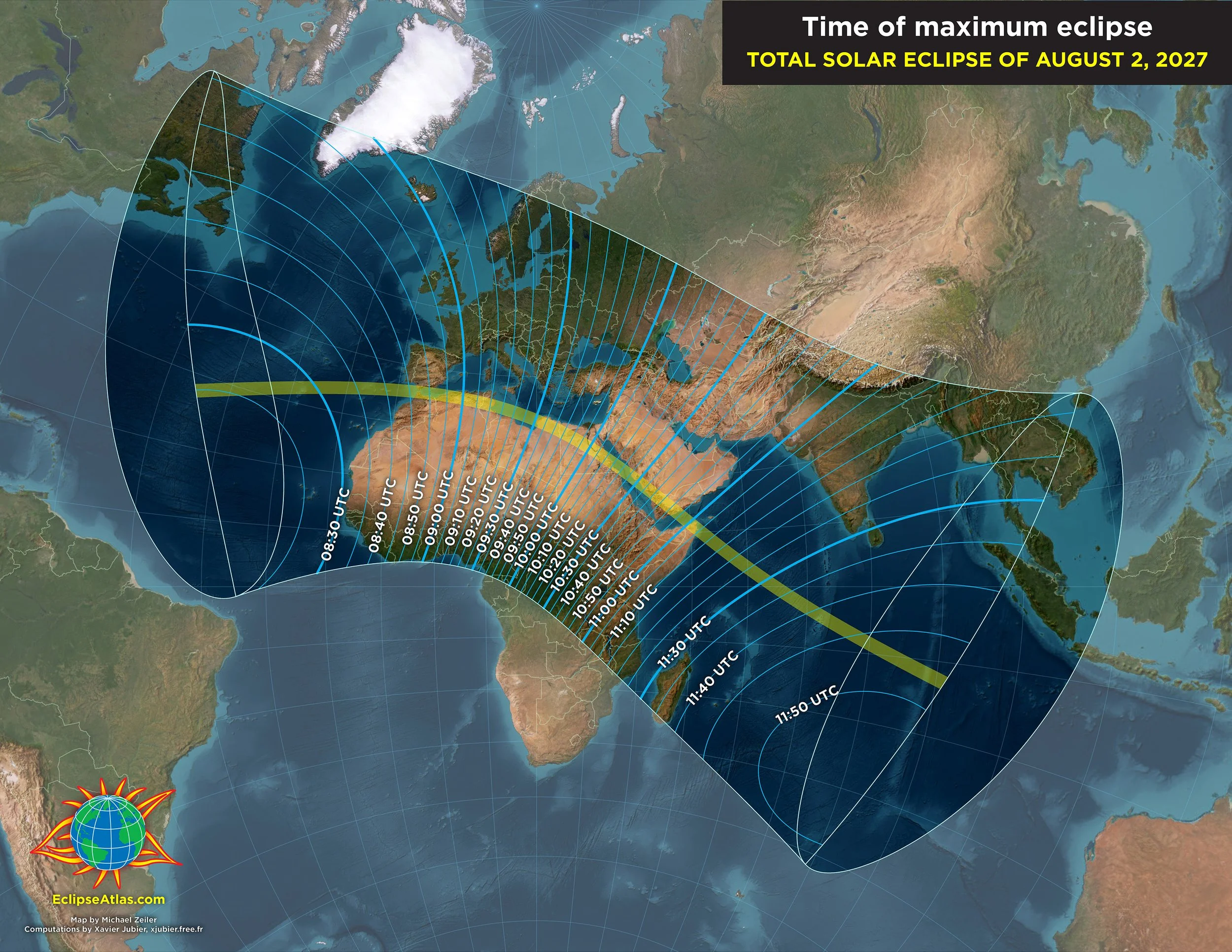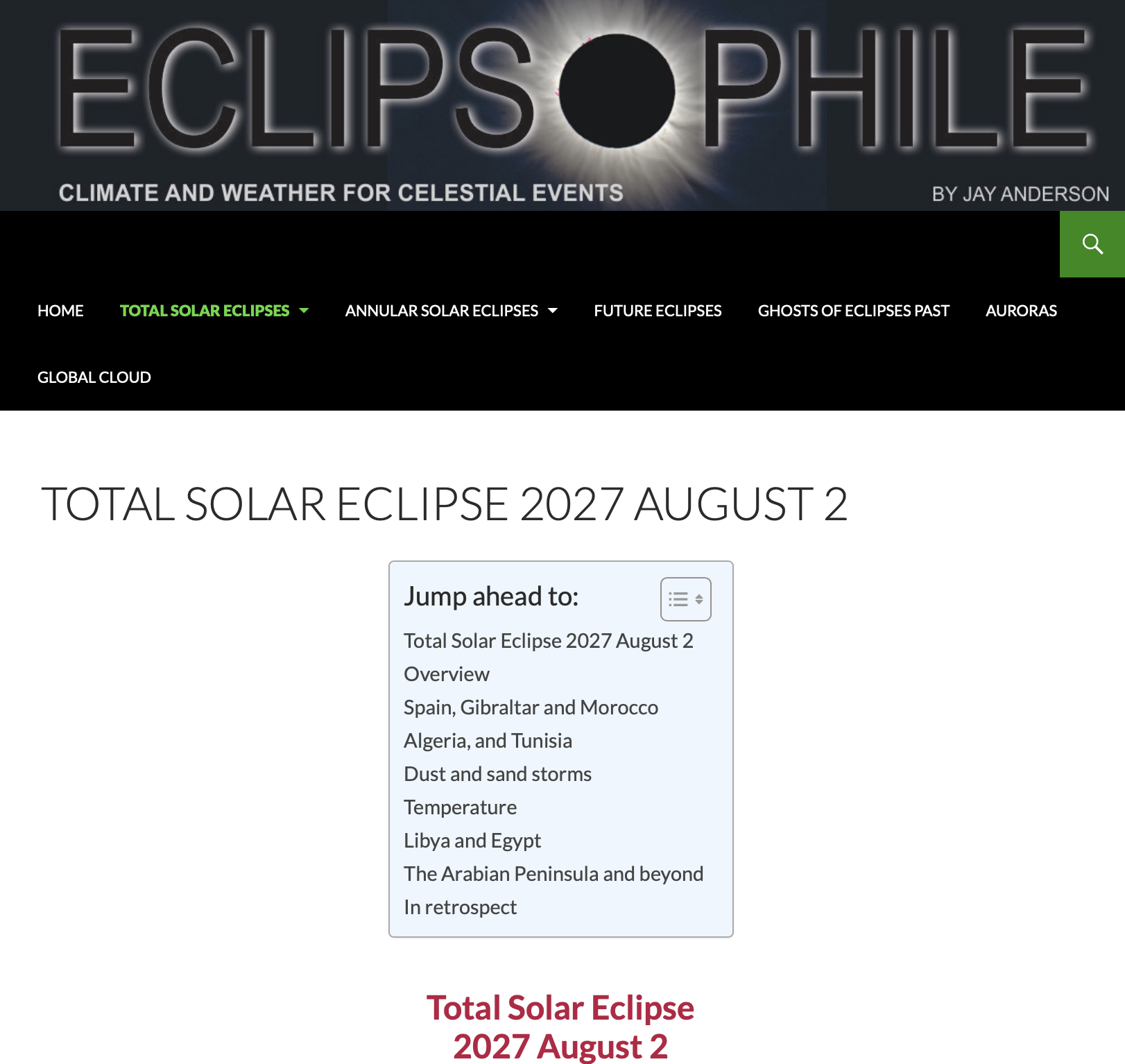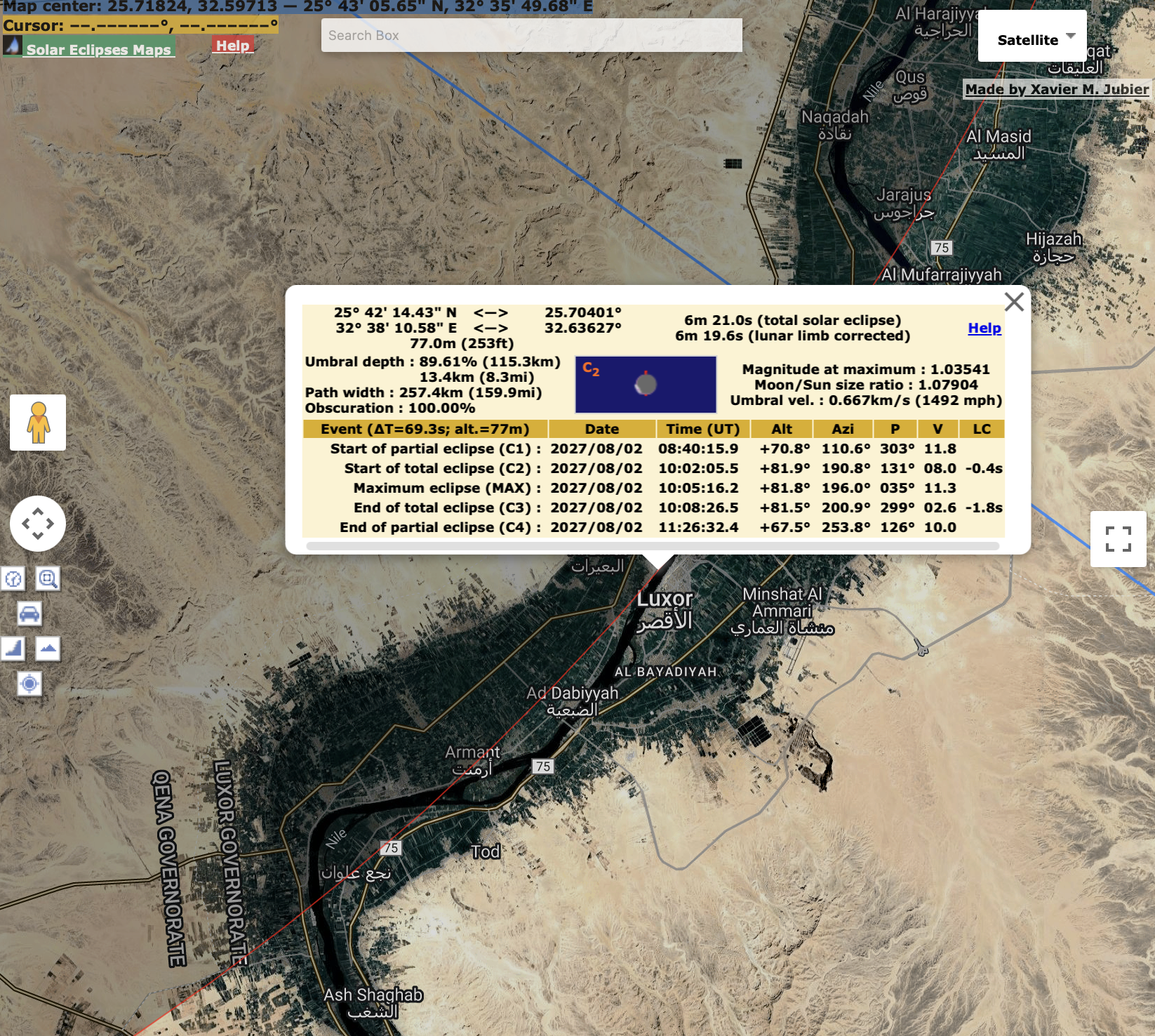Total Solar Eclipse of August 2, 2027
Totality begins in the North Atlantic Ocean, roughly at the midpoint between North America and Africa. First landfall of totality is in Morocco south of Tangier with a maximum duration of 4 minutes and 50 seconds. The shadow soon covers southern Spain and Gibraltar. Other North African countries in the path of totality are Algeria, Libya, Egypt, and the northeast corners of Sudan and Somalia. The Point of Greatest Eclipse is close to the ancient Egyptian sites of Luxor with 6 minutes and 23 seconds, the maximum duration for the remainder of our lifetimes. The shadow next crosses the Red Sea and darkens Jeddah and Makkah of Saudi Arabia before traversing to Sanaa, Yemen. After crossing the Gulf of Aden, totality passes Somalia with the last landfall over the northern reefs of the Chagos Archipelago in the Indian Ocean.
Total solar eclipse over Luxor, Egypt
An especially dramatic venue for the solar eclipse will be Luxor on the Nile River. Luxor is very close to the centerline of the eclipse, as well as close to the point of greatest eclipse. Consequently, Luxor will have 6 minutes and 20 seconds, just short of the maximum 6 minutes and 23 seconds.
Many eclipse tourists will flock to Luxor by river cruises. The odds of clear skies here are nearly 100% with the possible hazards being dust storms and extreme hot weather. Eclipse visitors here will welcome the phenomena of eclipse cooling during totality!
Total solar eclipse over the Strait of Gibraltar
The total solar eclipse makes first landfall at the Strait of Gibraltar. This eclipse is the longest total solar eclipse for the next 160 years! The total solar eclipse of July 16, 2186 will have a ridiculously long duration of 7 minutes and 29 seconds, very close to the longest possible length of totality. Spain is the only country in Europe to witness totality and every North African country will get a piece of the action, as well as Saudi Arabia and Yemen. The weather prospects are very good at most places inside the path of totality.
The eclipse in motion
The animation shows the inner shadow (umbra) and outer shadow (penumbra) of the eclipse from the perspective of the Moon. The umbra is where the total solar eclipse will be seen. The penumbra is where a partial solar eclipse will be observed from Spain, North Africa, and Arabia.
A careful look at this animation shows how the Earth’s axial tilt, the Moon’s orbital inclination, and the offset from Earth’s center (called gamma) combine to create this curved eclipse path of totality on Earth.
The eclipse in summary
The maximum duration of totality occurs within the red dot on the yellow path of totality in Egypt.
Eclipse magnitude is the fraction of the Moon’s apparent disk size compared to the Sun.
Eclipse gamma is the fraction of the how close the center of the Moon’s shadow passes to the center of Earth.
Learn about Saros 136 at www.eclipsewise.com/solar/SEsaros/SEsaros136.html. Saros 136 has produced the longest total solar eclipses in our lifetime, including eclipses in 1955, 1973, 1991, 2009, 2027, and 2045.
Detail maps of the path of totality
These maps detail the passage of the Moon’s shadow over all of North Africa and Arabia. A graticule with lines of latitude and longitude is given for those navigating either by ship or remote land travel.
Strait of Gibraltar
Morocco and Algeria
Algeria
Algeria and Tunisia
Tunisia
Libya
Libya and the Mediterranean
Libya
Libya
Libya and Egypt
Libya and Egypt
Egypt
Nile river of Egypt
Nile river of Egypt
Egypt and the Red Sea
Saudi Arabia and Yemen
Saudi Arabia and Yemen
Yemen
Yemen
Somalia
Somalia
Circumstances of the eclipse
These maps give the maximum eclipse obscuration, times of beginning, mid-eclipse, and end, and sun altitude at beginning, mid-eclipse, and end.
Maximum eclipse obscuration
Time when eclipse begins
Time of maximum eclipse
Time when eclipse ends
Sun altitude when eclipse begins
Sun altitude at maximum eclipse
Sun altitude when eclipse ends

